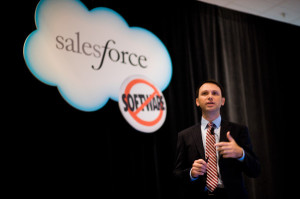 Salesforce.com will this week unveil Salesforce1 at the Dreamforce conference in San Francisco, as it aims to establish its image as a full-blown CRM (customer relationship management) development platform built for the world of social media and mobile devices.
Salesforce.com will this week unveil Salesforce1 at the Dreamforce conference in San Francisco, as it aims to establish its image as a full-blown CRM (customer relationship management) development platform built for the world of social media and mobile devices.
While Salesforce.com has long offered the Force.com development platform to customers and partners, Salesforce1 is more than just a rebranding of the same technology, the company says.
It offers 10 times as many APIs (application programming interfaces), as well as new components for building user interfaces, said Michael Peachey, Senior Director of solutions marketing.
Salesforce1 also features a new mobile application that provides customers a unified way to use Salesforce.com’s applications, those they have custom-built, and those they have purchased from partners through the Salesforce.com AppExchange, Peachey said.
In addition, it includes a new mobile application for administrators that allows them to take actions such as remotely resetting passwords, deactivating users and receiving information about scheduled maintenance from its website.
Much has been made of the “Internet of things,” but that phrase misses the point, Peachey said. “Every company needs to create their own Internet of customers.”
All Salesforce.com customers will be automatically upgraded to the new platform, which Marc Benioff, CEO, Salesforce.com, is expected to discuss during his keynote address at Dreamforce on Tuesday.
The early announcement of Salesforce1 may be tied to the fact that Salesforce.com is announcing its third-quarter earnings after the market’s close on Monday.
The launch comes as the world enters the age of “digital business,” in the words of Ray Wang, Analyst, Constellation Research. There’s a range of customers for companies to target, from “digital natives” who grew up with the Internet to “digital holdouts” who have resisted the shift, Wang said.
Companies must recognise “that they no longer sell products and services, as buyers seek experiences and outcomes,” Wang added. That means delivering the right information to customers at the right time, rather than “real-time information overload,” he said.





